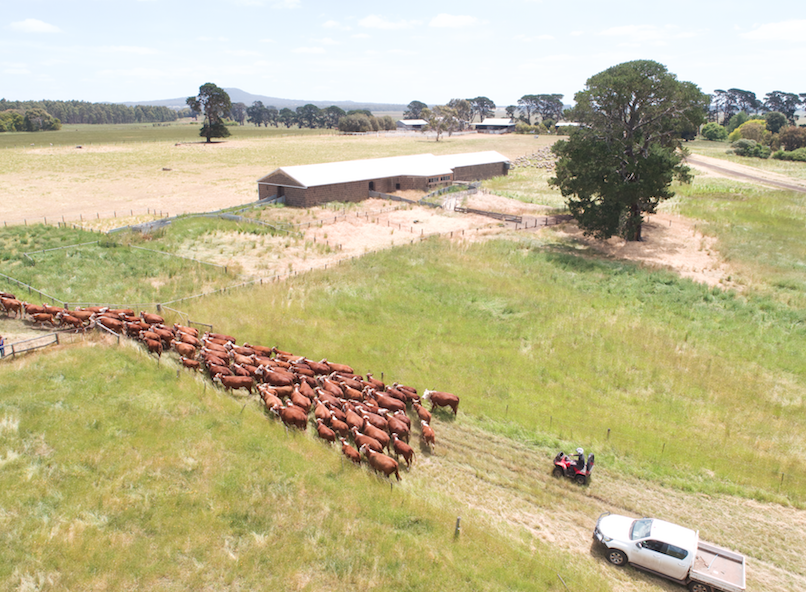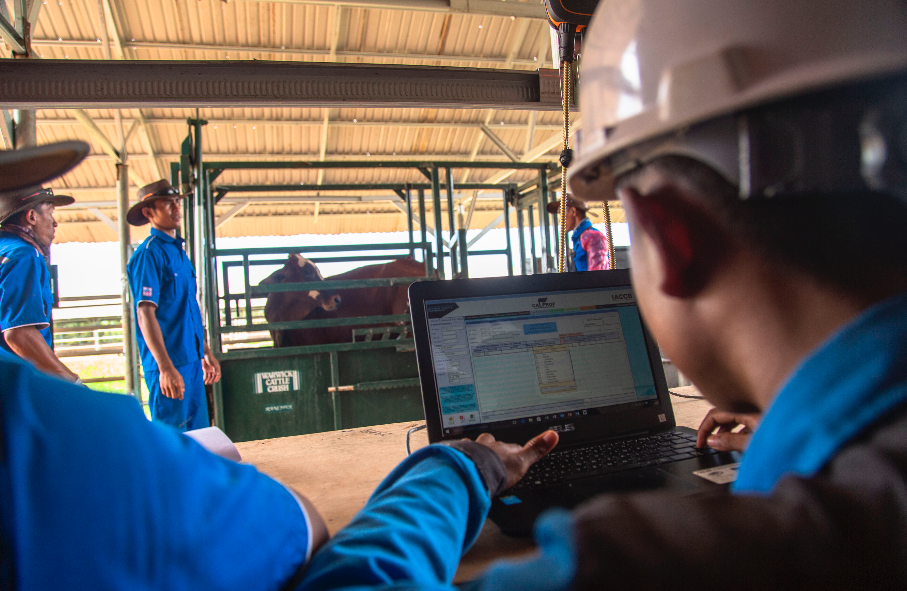Destination Digital
The Partnership’s assessment of technology options for the production and marketing of red meat in Indonesia provides a pathway to capitalise on a digital future.
Indonesian beef cattle breeders, feedlots, processors, and other red meat enterprises have a bold future if they can harness the capabilities and efficiencies of digital technology.
This is the view of industry experts such as Dr Dahlanuddin, Professor in Animal Science at the University of Mataram in Indonesia.
The professor attended the Livestock Export Program’s virtual conference on the 14th of December 2020 to present the preliminary findings of the Partnership’s study into digital technology options in the Australian and Indonesian red meat and cattle sectors.
“Australia’s National Livestock Identification System gives it a comprehensive ability to identify individual animals via an electronic tag, trace cattle movement through to slaughter, and store this information for retrieval if needed,” Dr Dahlanuddin says.
“This information underpins Australia’s systems of disease control, biosecurity, food safety, product integrity, and export market access.”
“Australian feedlots use relatively sophisticated technologies such as bunker scanning, while robotics are becoming more common in processing facilities. Barcodes, radio-frequency identification embedded in packaging, and temperature loggers are used throughout the logistics chain.”
“Innovations at the retail end include smart packaging to improve shelf life and traceability, demand forecasting systems, and a wide range of e-marketing systems.”
However, according to Dr Dahlanuddin, very few stakeholders in the Indonesian beef supply chain have access to, or make use of, digital technologies for production or logistics purposes.
“While some traceability of product is possible in Indonesia, this currently occurs mainly via manual records, which are subject to human handling errors and make for slow recall of information,” Dr Dahlanuddin says.
Internet commerce, on the other hand, is being successfully applied in both Australia and Indonesia, better connecting beef producers and retailers with consumers.
In Indonesia, the vast and active smartphone user base of around 160 million people is using social media and apps such as Tokopedia, Shoppee, Bukalapak, Lazada, and Blibli to generate up to US$14 billion in e-commerce transactions each year.
Shopping trends established during the COVID-19 pandemic, along with ongoing societal changes in Indonesia (notably the increasing number of women participating in the workforce), are expected to further strengthen the shift to online purchasing.
Many Indonesian beef producers and retailers have already turned to multifaceted marketing strategies that integrate their traditional production, distribution, and retail assets with a strong e-commerce presence.
The Partnership’s assessment of Indonesia’s digital technology status paved the way for the study team—comprised of academics from the University of Queensland, Deakin University, the University of Mataram, and IPB University— to advance a series of recommendations that will allow Indonesia to better grasp beef production efficiencies and marketing opportunities in an increasingly digital world.
The report’s seven recommendations include:
- The Government of Indonesia making available digital technologies for electronic cattle identification, such as ear tags and readers that use radio-frequency identification and or global positioning systems.
- Developing a data management system, maintained by Indonesia’s Ministry of Agriculture, to collect, store, and provide access to electronic cattle identification and traceability records.
- Implementing a targeted education program on technologies available throughout the red meat and cattle supply chain, providing information on generating efficiencies, minimising errors in data handling, streamlining information flows, and adding value.
- Undertaking research into the suitability of e-commerce platforms, assessing the services offered, business models used, and target markets accessed.
- Assessing gaps in online beef marketing, including logistical issues, displaying Halal certificates, providing varied payment methods, and ensuring appropriate e-commerce information such as delivery tracking status, user reviews, and product wish lists.
- Developing and improving cold chain and associated infrastructure to reduce e-commerce delivery times and costs, and to ensure that product quality and freshness is maintained until the product reaches the consumer.
- Updating beef producers and retailers, especially small businesses, on evolving regulatory frameworks related to the e-commerce market and supporting systems such as digital payments.
For a copy of the full report on digital technology options in the Australian and Indonesian red meat and cattle sector, go to bit.ly/DigitalOptionsStudy.










